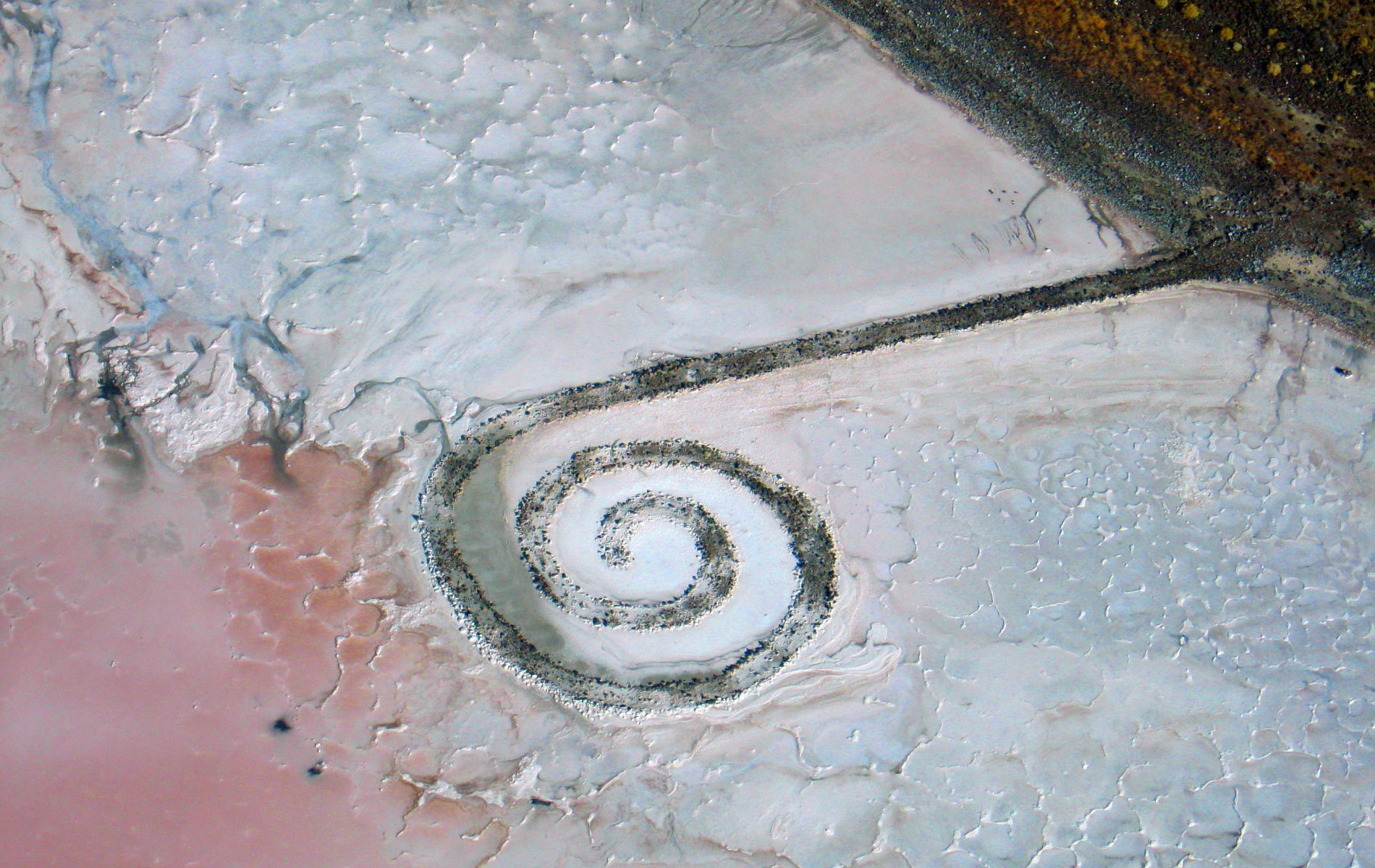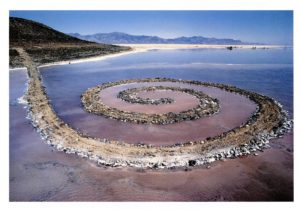Oftentimes, people associate public art with cities, but it is possible for art to take on other forms by utilizing resources found away from the chaos and politics. Land art defines art which is inseparable from the landscape. It is created in nature by materials found in nature such as rock, wood, and pigment. As a result, land art erodes and decays naturally. One example of land art displayed in the video was Robert Smithson’s “Spiral Jetty.” It implemented the rock, mud, water, and salt crystals of the Great Salt Lake to create the 1,500 by 15 foot massive spiral which is visible from space. At times it is submerged by high tides and during drought periods, it features prominently on the landscape. I found other examples of beautiful and intriguing land art on mymodernmet.com in an artice titled “21 Unforgettable Examples of Land Art.” These images display the variety and uniqueness of land art. Some designs use the vibrant colors of fall leaves while others take advantage of the malleability of snow. In contrast, many post-industrialist landscapes transform industrial materials such as an abandoned mine, into art. Many land artists seek to explore the relationship between archaeology and modern art and are inspired by ancient ruins such as the Mayan temples. Overall, land art is versatile and highlights the diversity and artistry that can be drawn from nature.

a wiki of socially engaged art


